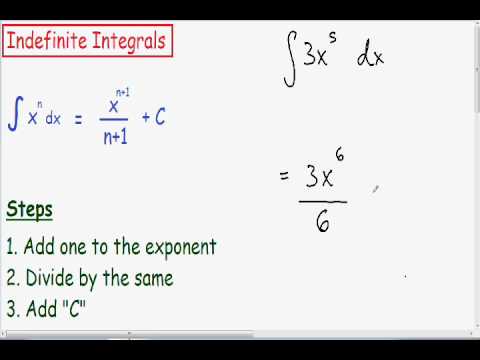Integral Calculus is the branch of mathematics that studies integrals and their properties. In Calculus, the two important processes are differentiation and integration. We know that differentiation is the process of determining a function’s derivative, whereas integration is the inverse process of differentiation. Integration is a key concept since it is the inverse process of differentiation.
Integrals can be classified into two different categories, namely,
Definite Integrals
Indefinite Integrals
Let’s discuss integral calculus and one of the integral types called “Indefinite Integrals” with definitions and properties in detail.
Integral Calculus
If we know the f'(x) of a differentiable function in its domain, we can determine f(x). In Differential Calculus, we call f'(x) the derivative of the function f(x). In Integral Calculus, the anti-derivative or primal of the function f'(x) is referred to as f(x). The process of obtaining f(x) from f’ is referred to as integration (x). The function f is referred to as antiderivative or integral of f'(x) in this case.
Example:
Given: f(x) = x2 .
Derivative of f(x) i.e., f'(x) = 2x = g(x)
if g(x) = 2x, then anti-derivative or integral of g(x) = ∫ g(x) = x2
Methods to Find Integrals
Indefinite integrals can be found using a variety of methods. The most common methods are:
Finding Integrals by Substitution Method
The substitution method is used when you want to find a few integrals. In case u is a function of x, then u’ = du/dx.
∫ f(u)du = ∫ f(u)u’ dx,
where u = g(x).
Finding Integrals by Integration by Parts
When two functions are of the product form, integrals are derived using the method of integration by parts.
f(x)∫ g(x) dx – ∫ (f'(x) ∫g(x) dx) dx = ∫f(x)g(x) dx.
Finding Integrals by Integration by Partial Fractions
Integrating rational algebraic functions with positive integral powers of x in the numerator and denominator, as well as constant coefficients, is done by integrating them using partial fractions method.

To find f(x)/g(x).dx, decompose this improper rational function into a proper rational function and then integrate.
∫f(x)/g(x) dx = ∫ p(x)/q(x) + ∫ r(x)/s(x), where g(x) = a(x) . s(x)
Application of Integrals
Integrals have a wide range of applications, some of which are given below:
In Maths,
- To find the centre of mass (Centroid) of a curved area.
- To find the area under a curve and between two curves.
- The average value of a curve.
In Physics
Integrals are used to compute:
- The centre of gravity of an object.
- Mass of Vehicle and its momentum of inertia.
- The mass and velocity of satellites
- The mass and momentum of a tower.
- The trajectory taken by a satellite and its velocity when it is launched into orbit.
- In the calculation of Thrust.
- Integrals are used by engineers to determine the geometry of building structures or the length of the power line needed to connect the two substations, among other things.
Indefinite Integrals
If F(x) is any anti-derivative of f(x), then the greatest generic antiderivative of f(x) is referred to as an indefinite integral and is denoted,
∫f(x) dx = F(x) + C
Antiderivatives and integrals of functions are not unique. Each function has an infinite number of antiderivatives that may be obtained by arbitrarily selecting C from the set of real numbers. As a result, C is often referred to as an arbitrary constant. C is the parameter that controls the antiderivatives (or integrals) of the given function. Also, there are no upper or lower constraints on an indefinite integral.
Some Properties of Indefinite Integral
- ∫cf(x)dx=c∫f(x)dx
Here, c = constant value
The multiplicative constants can be extracted from the indefinite integral.
- ∫−f(x)dx=c∫f(x)dx
Because of the negative function, the indefinite integral is also negative.
- ∫f(x)±g(x)dx=∫f(x)dx±∫g(x)dx
It shows the sum and difference of the functions’ integrals as the sum and difference of their individual integrals.
